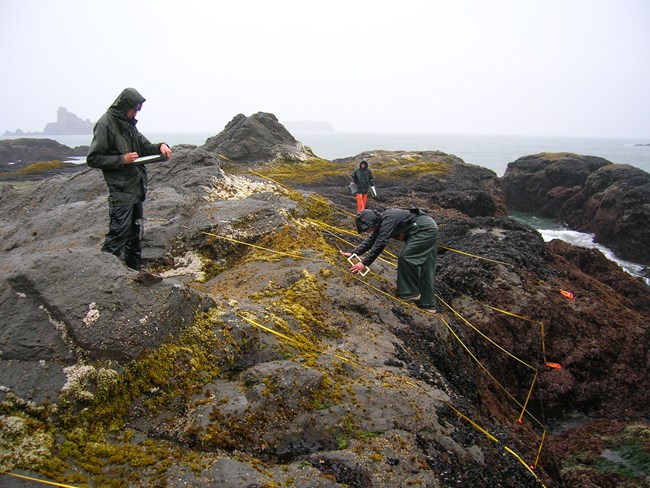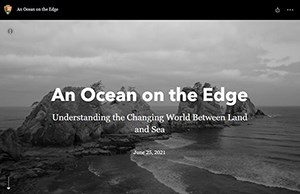
NPS Photo
Importance & Issues
The intertidal zone, an area inundated and exposed twice daily by the tide, is tightly linked to both terrestrial and nearshore marine ecosystems. The intertidal biological communities serve a key functional role in the foodweb dynamics of the nearshore ecosystem, manifested through nutrient transport and direct exchange of organisms between these ecosystems.
Intertidal communities are vulnerable to a host of stressors, such as pollution (e.g., oil spills), harvest, trampling, and unusual shifts in air and water temperatures. Intertidal communities are valuable vital signs of important changes in the nearshore marine ecosystem and are themselves a valuable indicator of marine water quality.
Monitoring Objectives
- Characterize natural variation and detect trends in species abundance and community structure in rocky shoreline and sand beach intertidal habitats.
- Characterize natural variation and detect trends in intertidal temperature in distinct nearshore oceanographic areas.
- Develop management actions or adaptation strategies, and where appropriate, identify causal stressors through additional research.
- Collaborate with the MARINe monitoring network to compare North Coast and Cascades Network rocky shoreline data to other monitoring locations along the west coast of North America.
Basic Approach
To detect ecologically significant changes in key intertidal species, we sample invertebrate and macroalgal communities in rocky intertidal and sand beach habitats. In rocky habitats, we monitor target species focusing on barnacles, mussels, and seastars, and we monitor communities of organisms living in different elevational bands constrained within the mid- and high-intertidal zones. A set of temperature dataloggers are deployed at the mid-intertidal level at each rocky intertidal monitoring site to assess year-round ocean and air temperatures that intertidal organisms experience during tidal fluctuations. In addition, we monitor invertebrates living in fine sand beaches at low tide along 60 meter transects. These transects are established at the recent high tide line and run towards the ocean.
Management Applications
By determining the range of natural variation in assemblage composition, abundance, and elevational distribution, park managers will be able to detect impacts from stressors including changes in water quality, harvest pressure, pollution, and climate change.
Detecting changes in habitat distribution and abundance can influence management decisions, which may lead to limiting habitat alteration. Documenting intertidal temperatures will inform park managers about changes in oceanographic processes that affect intertidal organisms, and this will enable managers to better understand changes in intertidal invertebrate and macroalgal communities. Ultimately, the intertidal monitoring program will allow park managers to detect meaningful changes in key intertidal resources.

NPS/Southern California Research Learning Center
Reports and Documents
Source: NPS DataStore Saved Search 566. To search for additional information, visit the NPS DataStore.
Source: NPS DataStore Saved Search 3701. To search for additional information, visit the NPS DataStore.
Last updated: December 4, 2024
